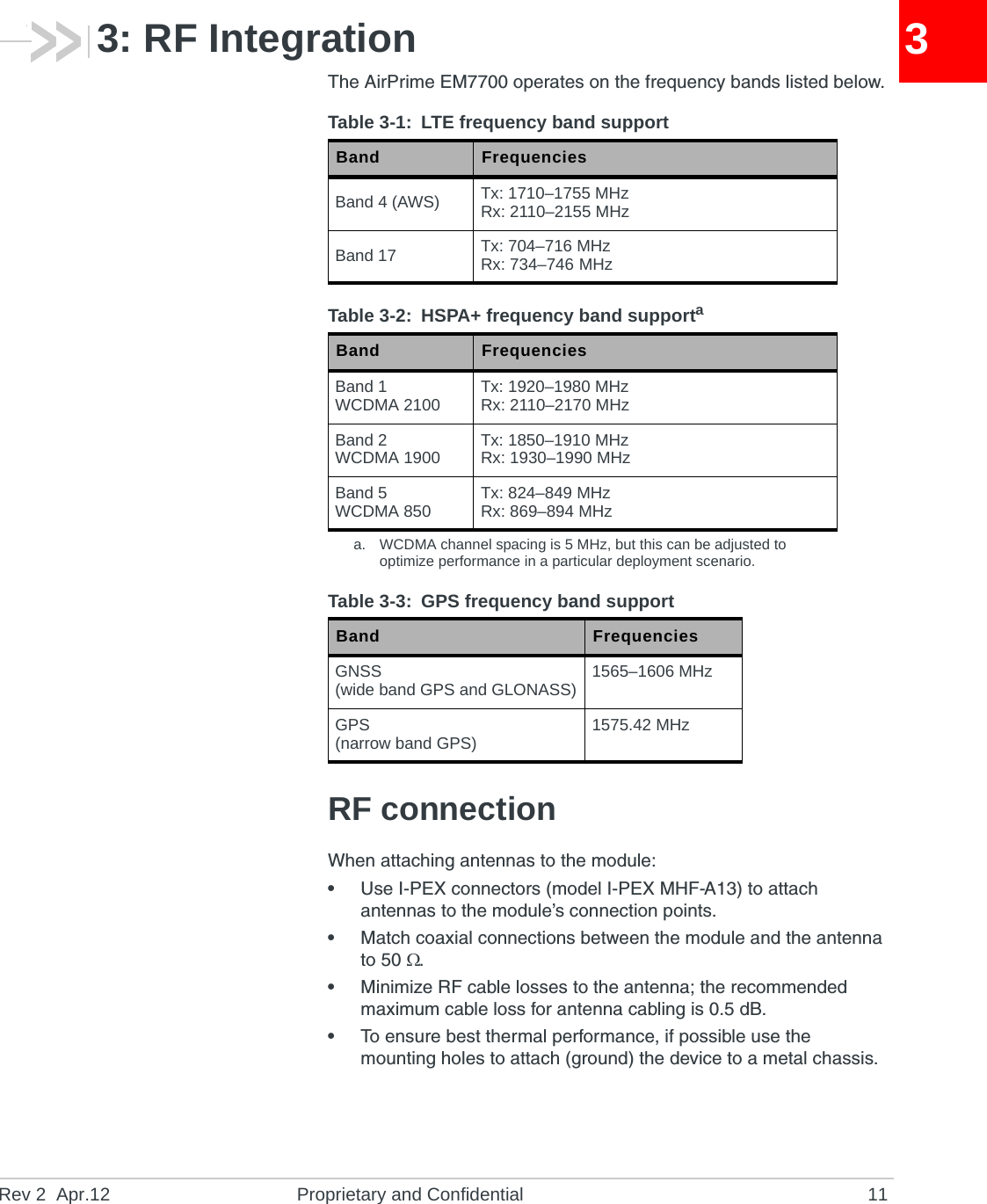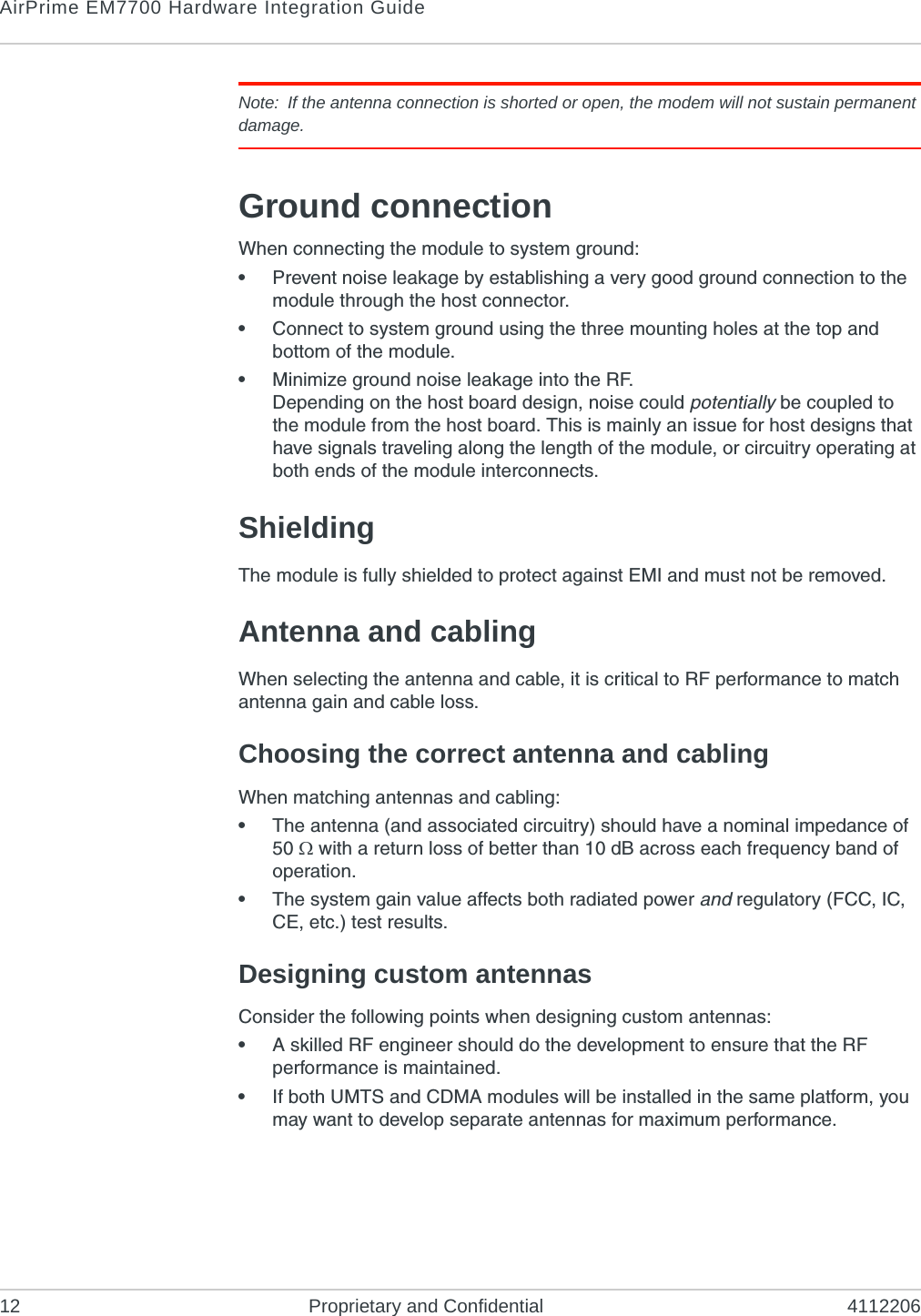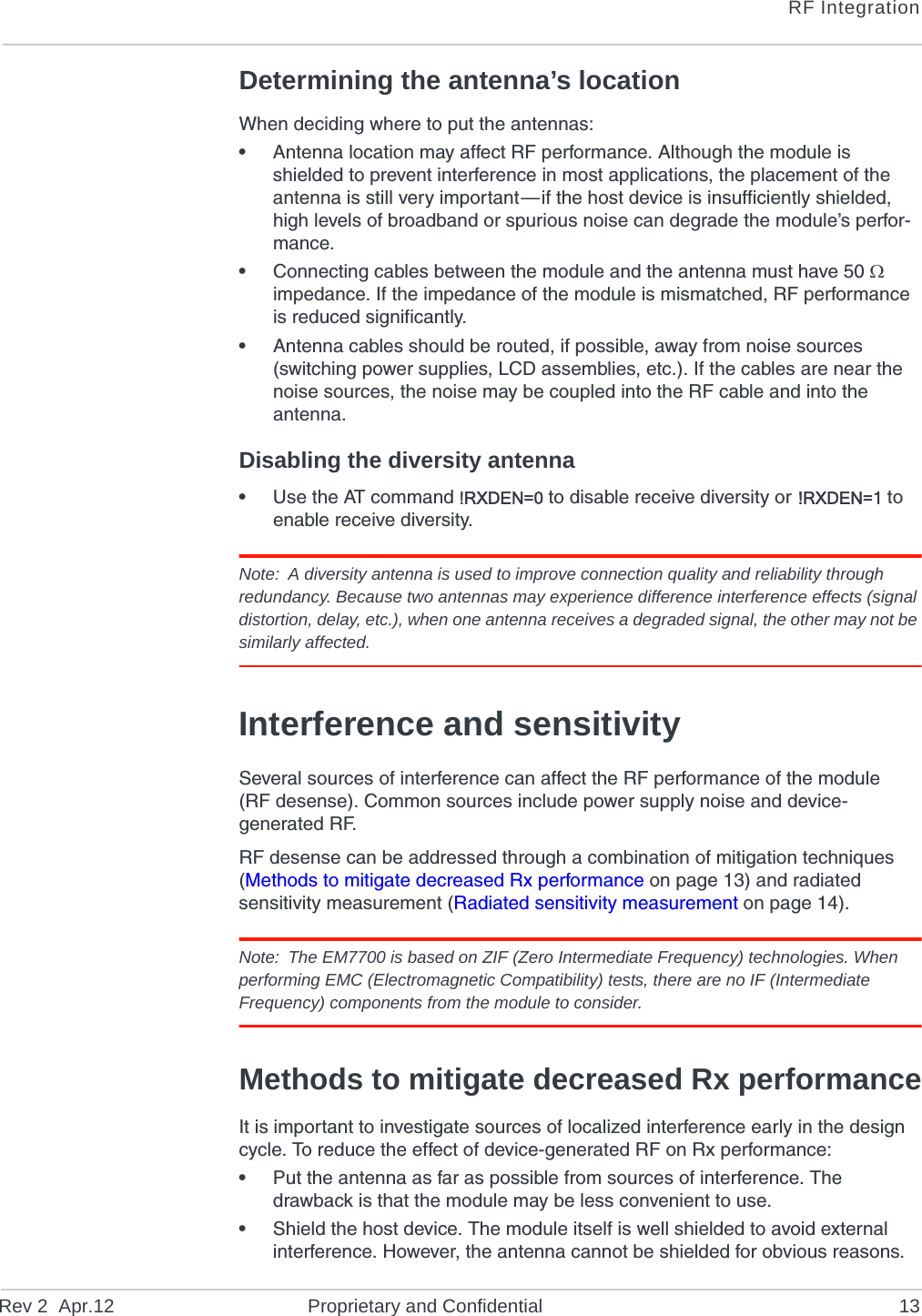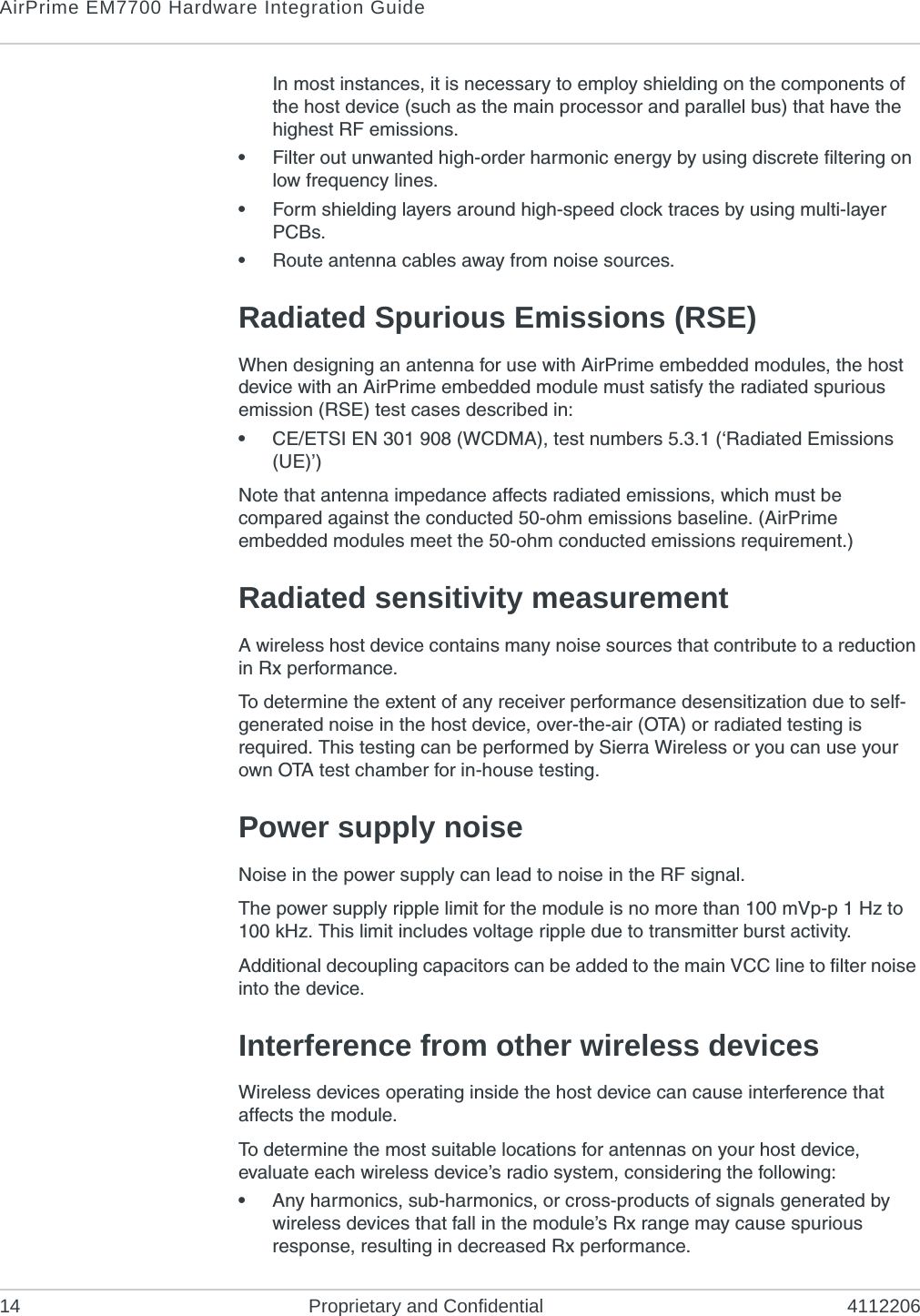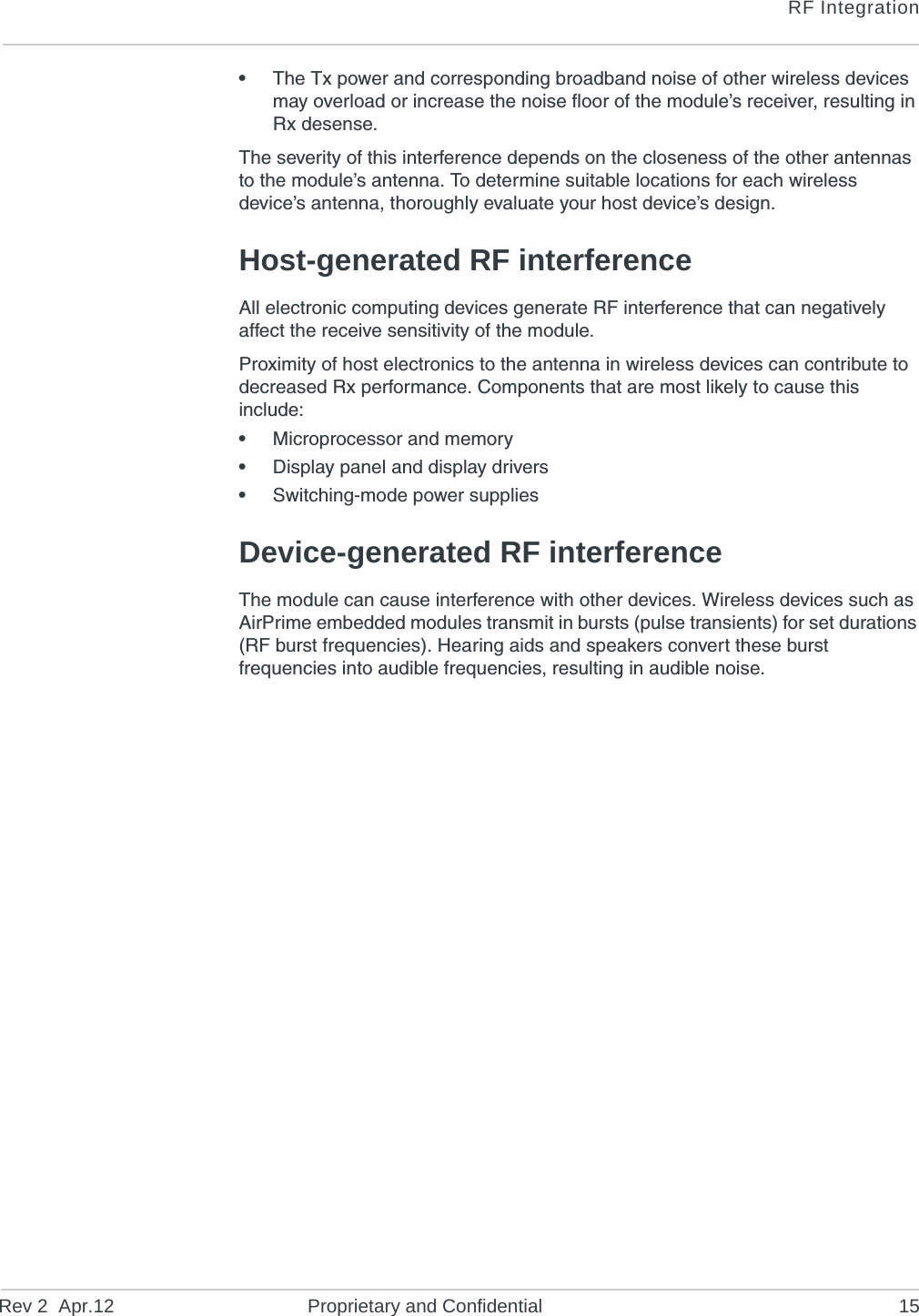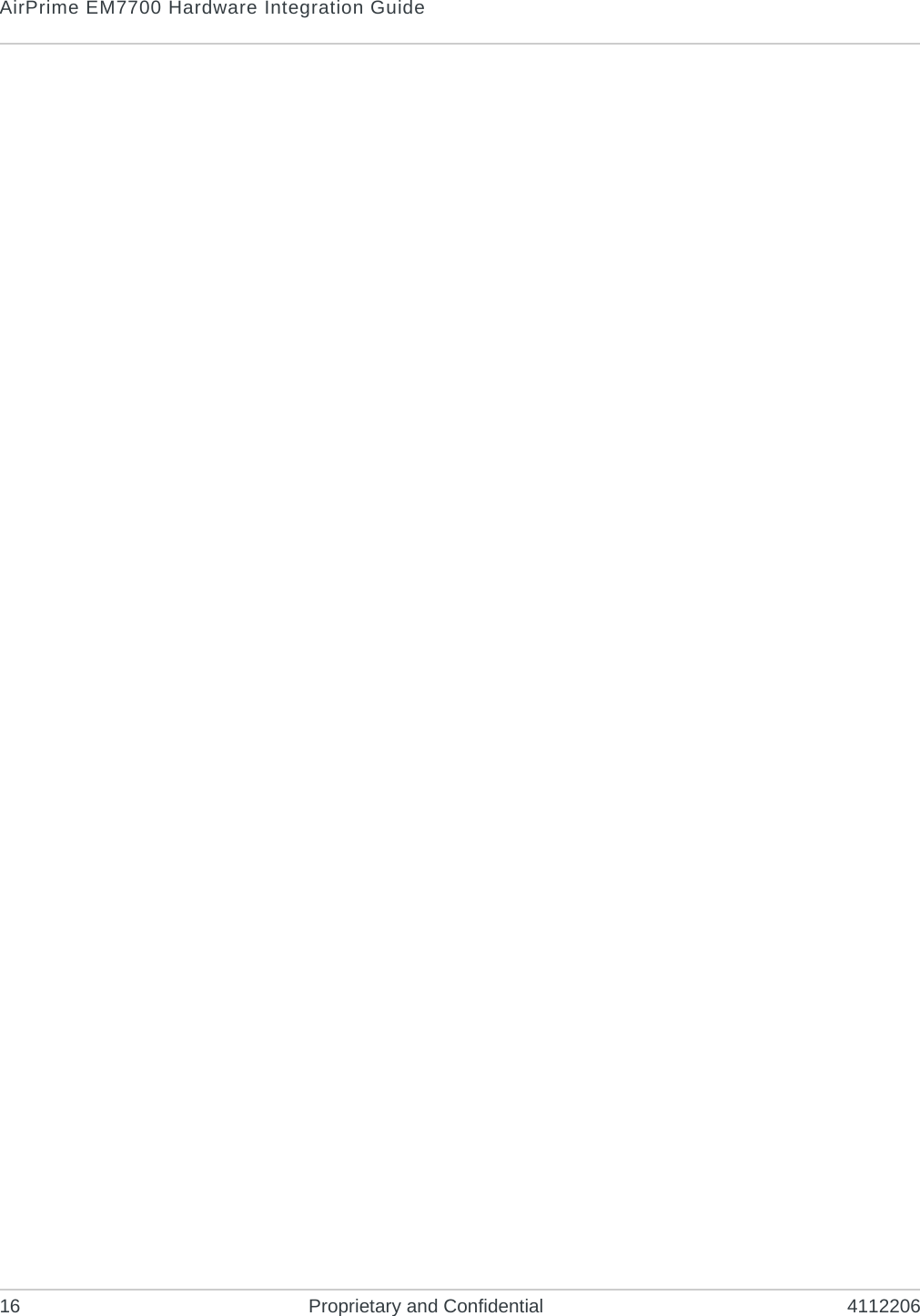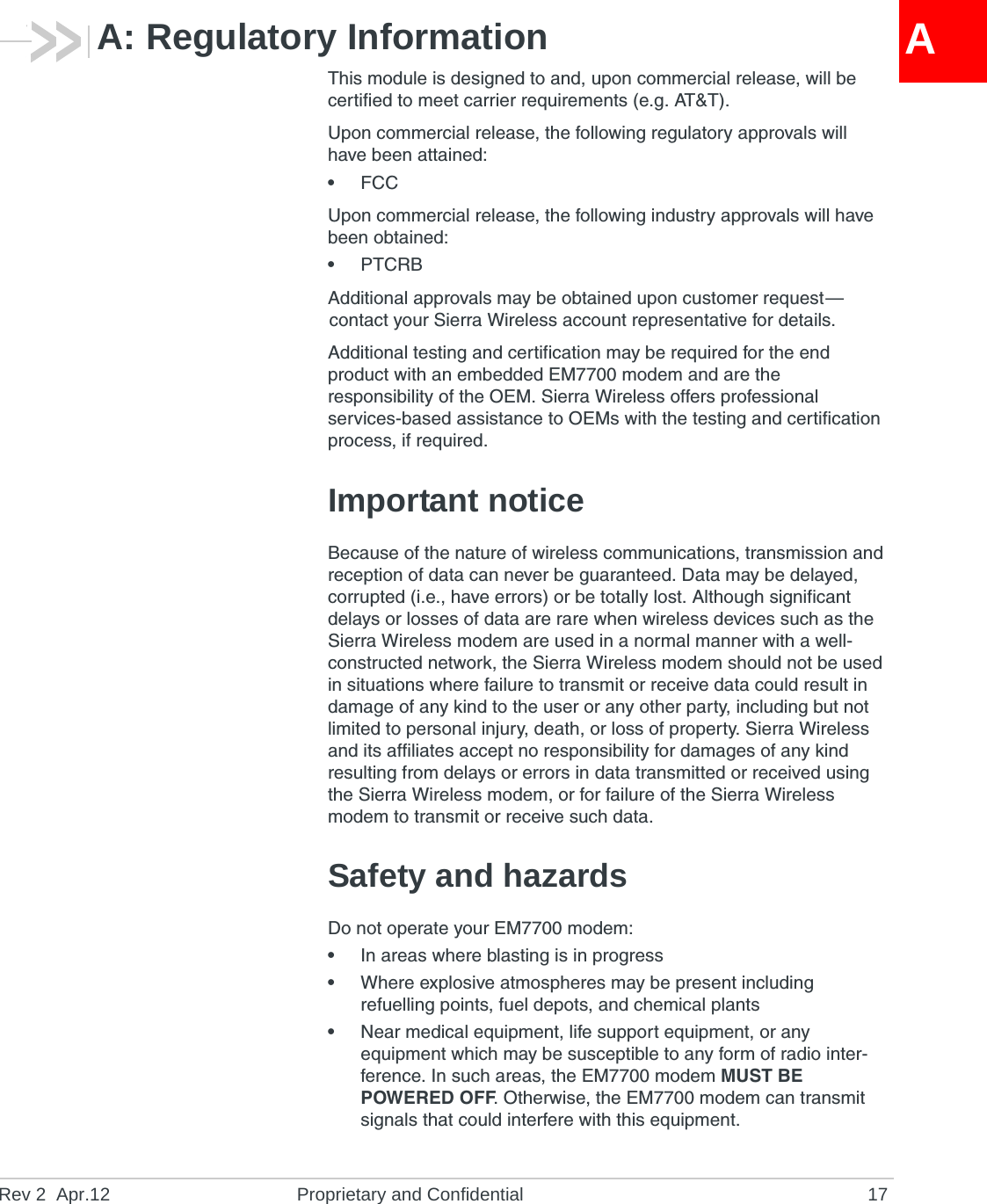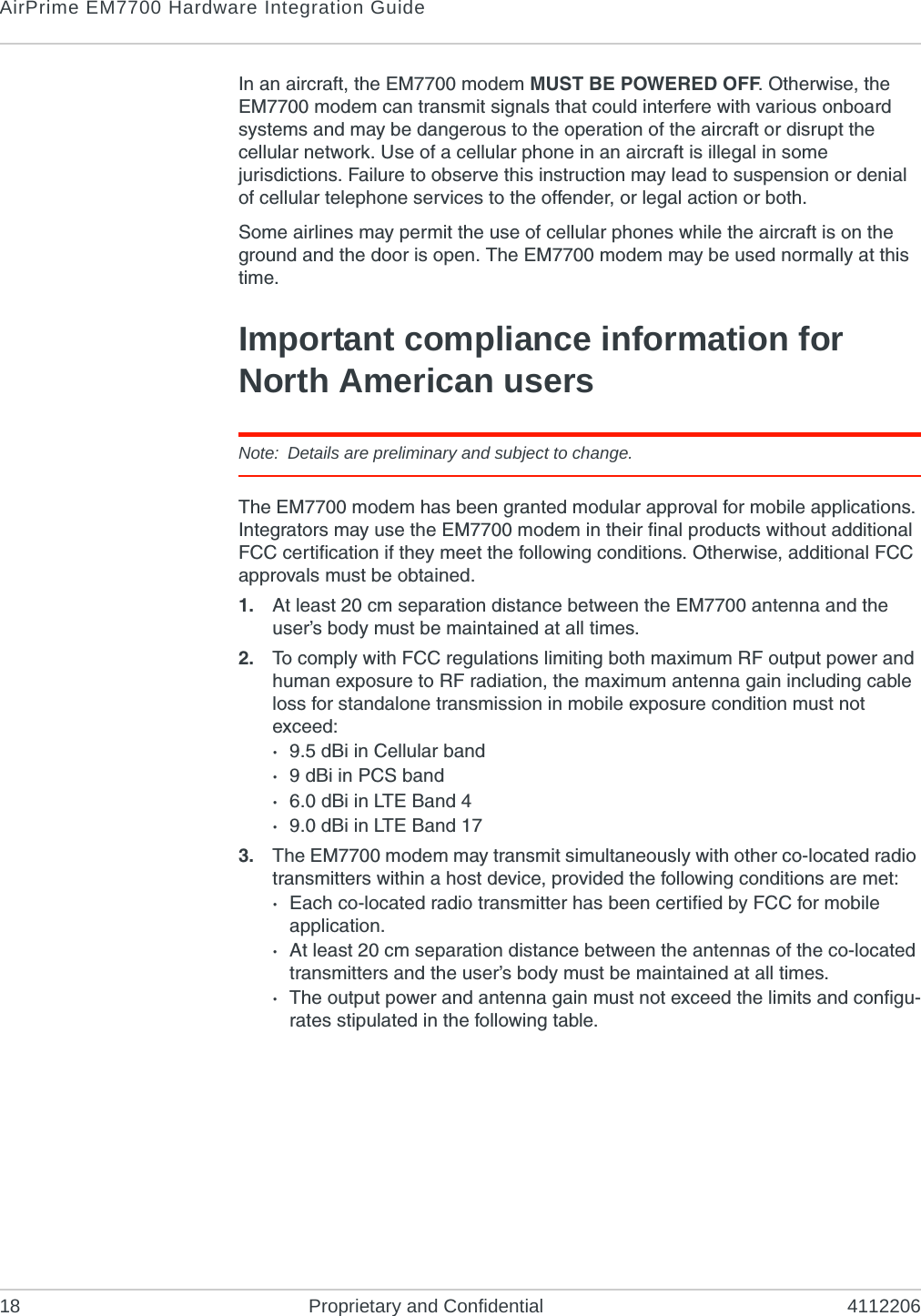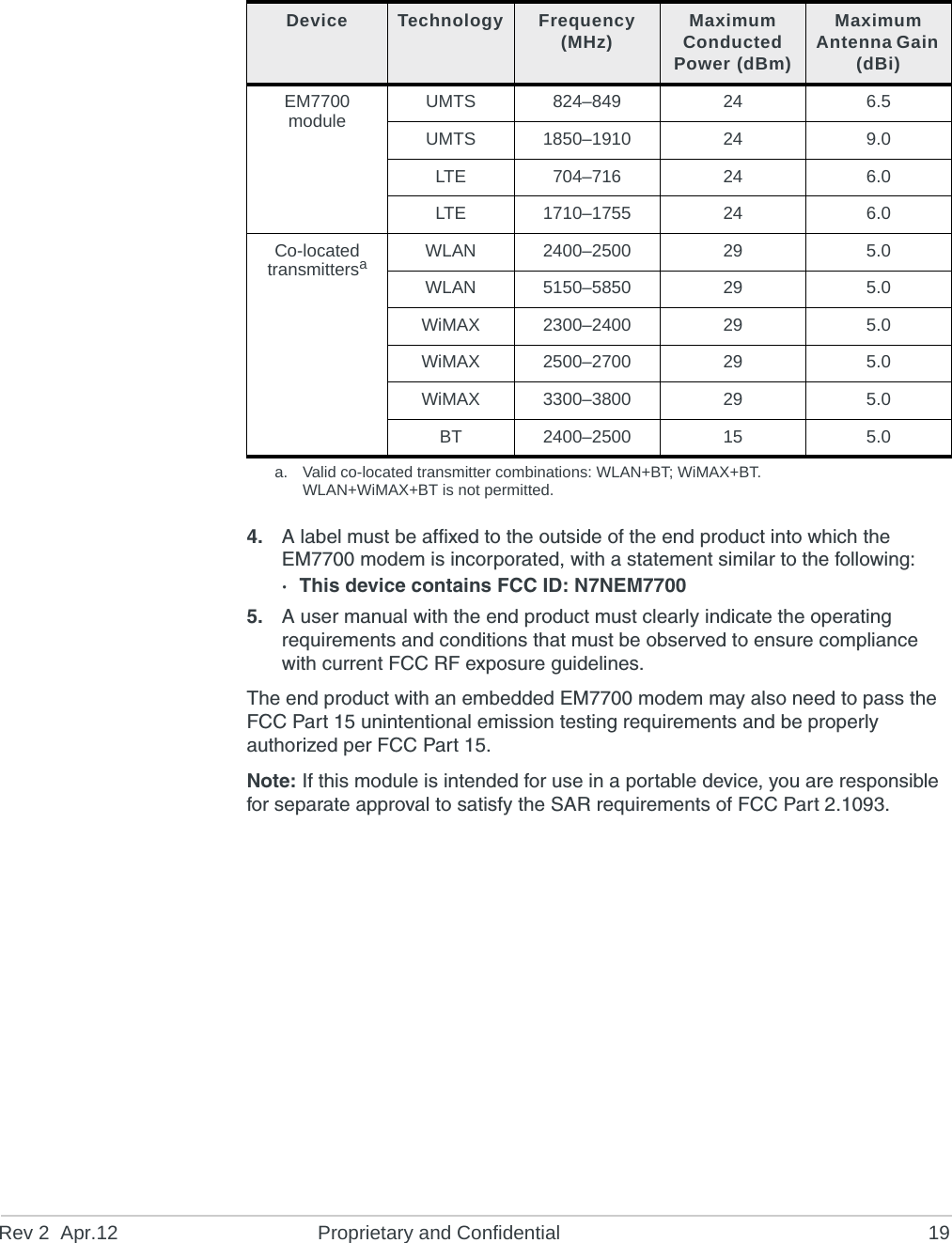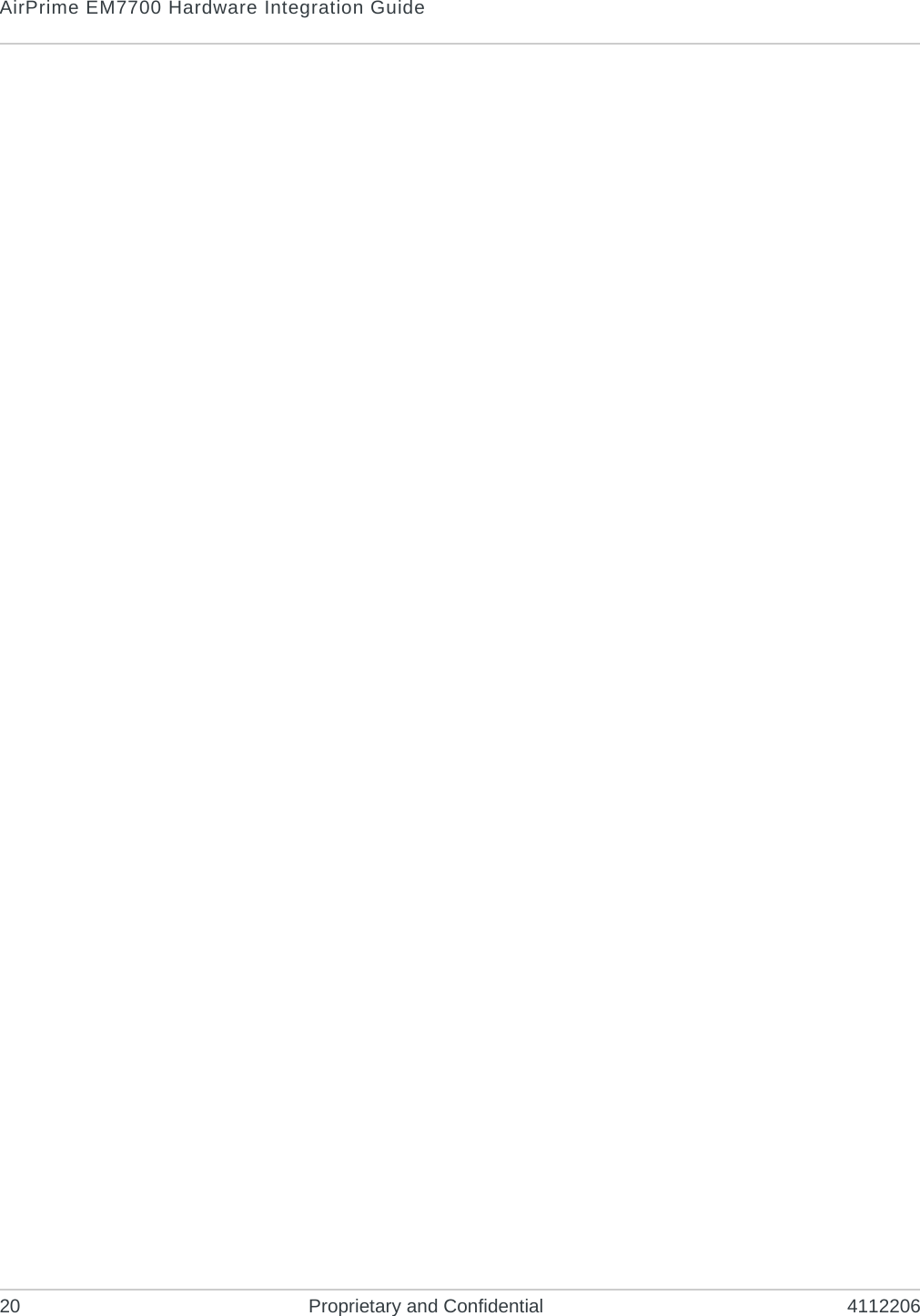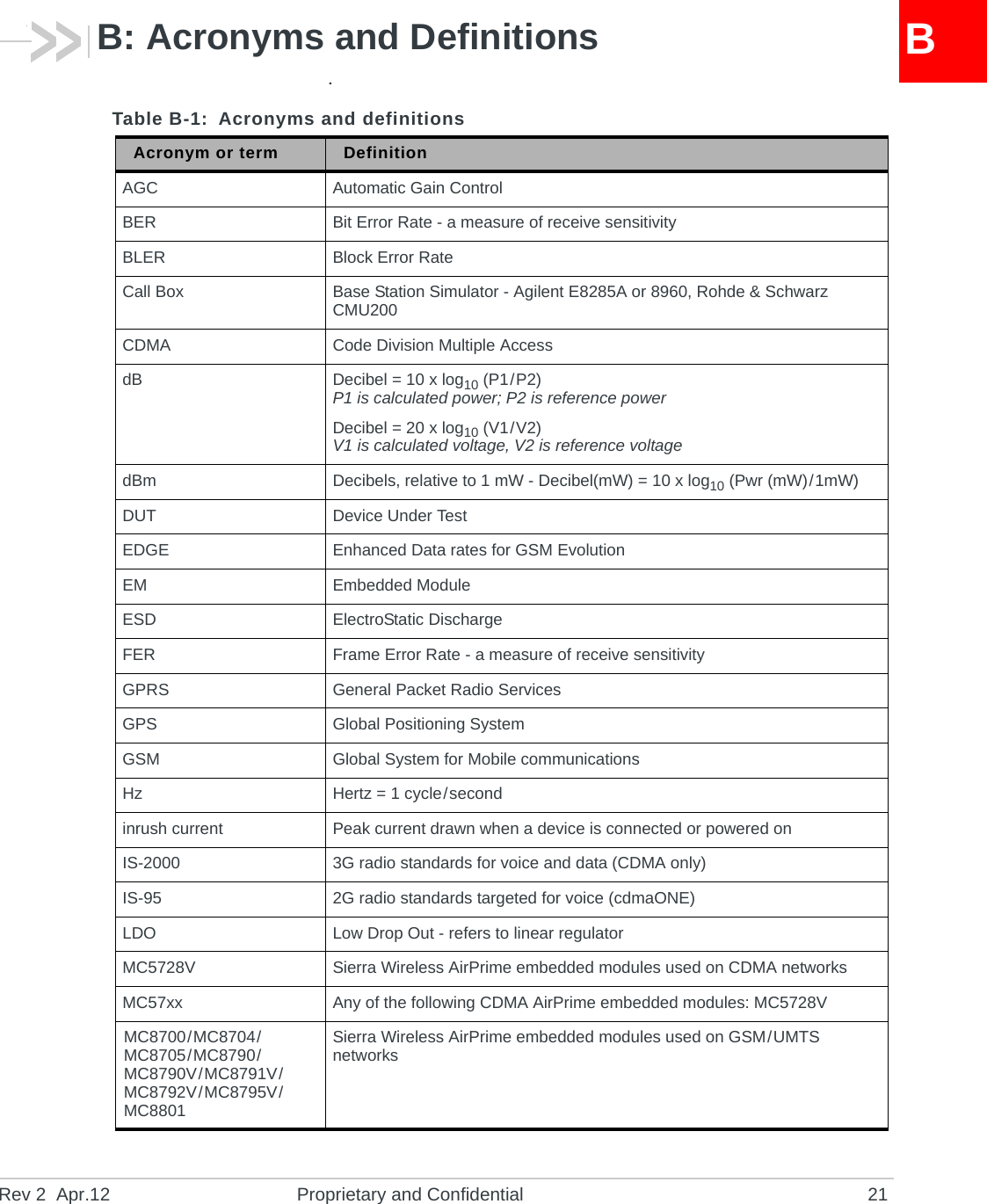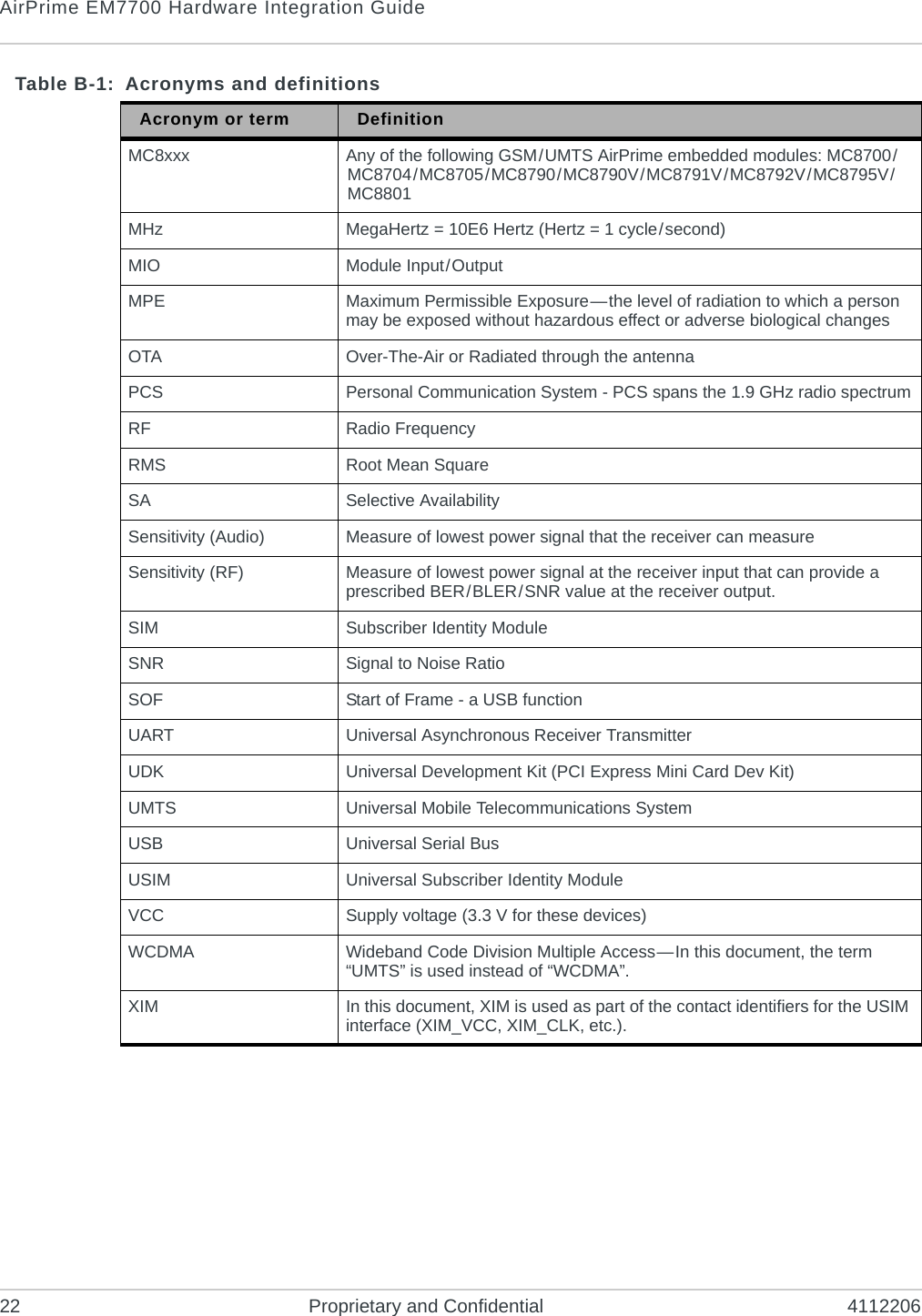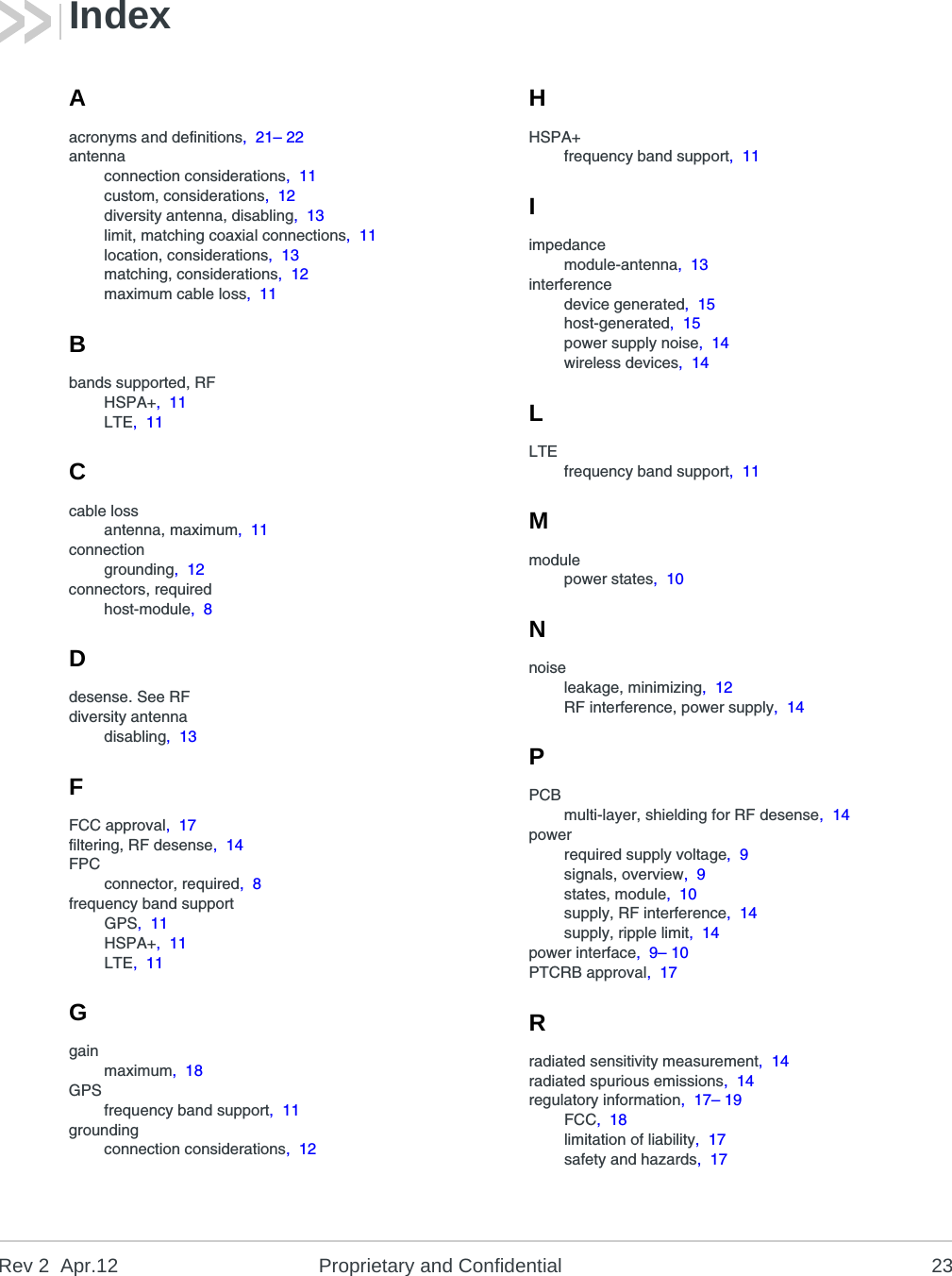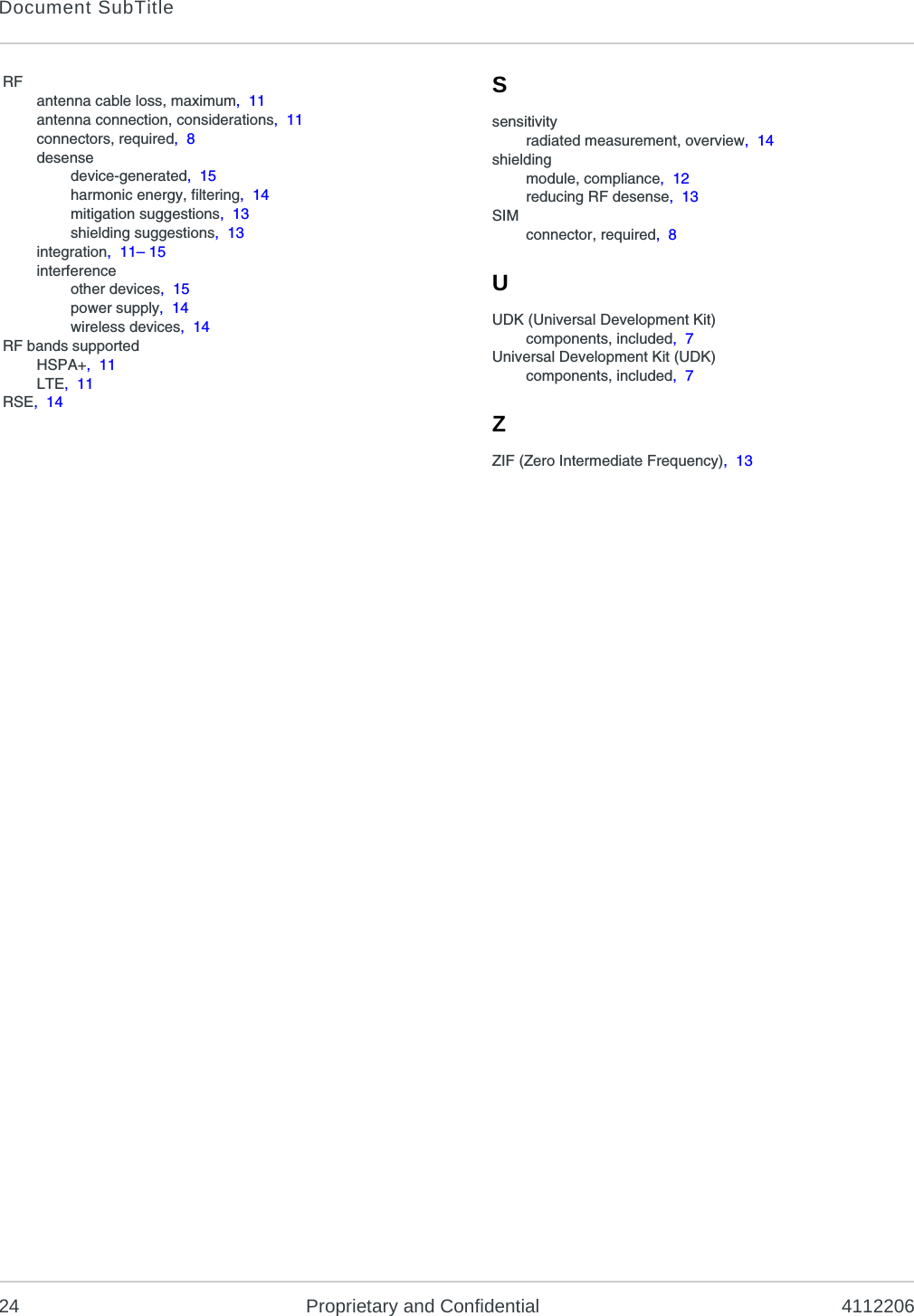Sierra Wireless EM7700 Cellular/PCS WCDMA and LTE Band 4/17 Modem User Manual AirPrime EM7700 Hardware Integration Guide
Sierra Wireless Inc. Cellular/PCS WCDMA and LTE Band 4/17 Modem AirPrime EM7700 Hardware Integration Guide
TempConfidential_EM7700 HW Integration Guide (FCC) v2
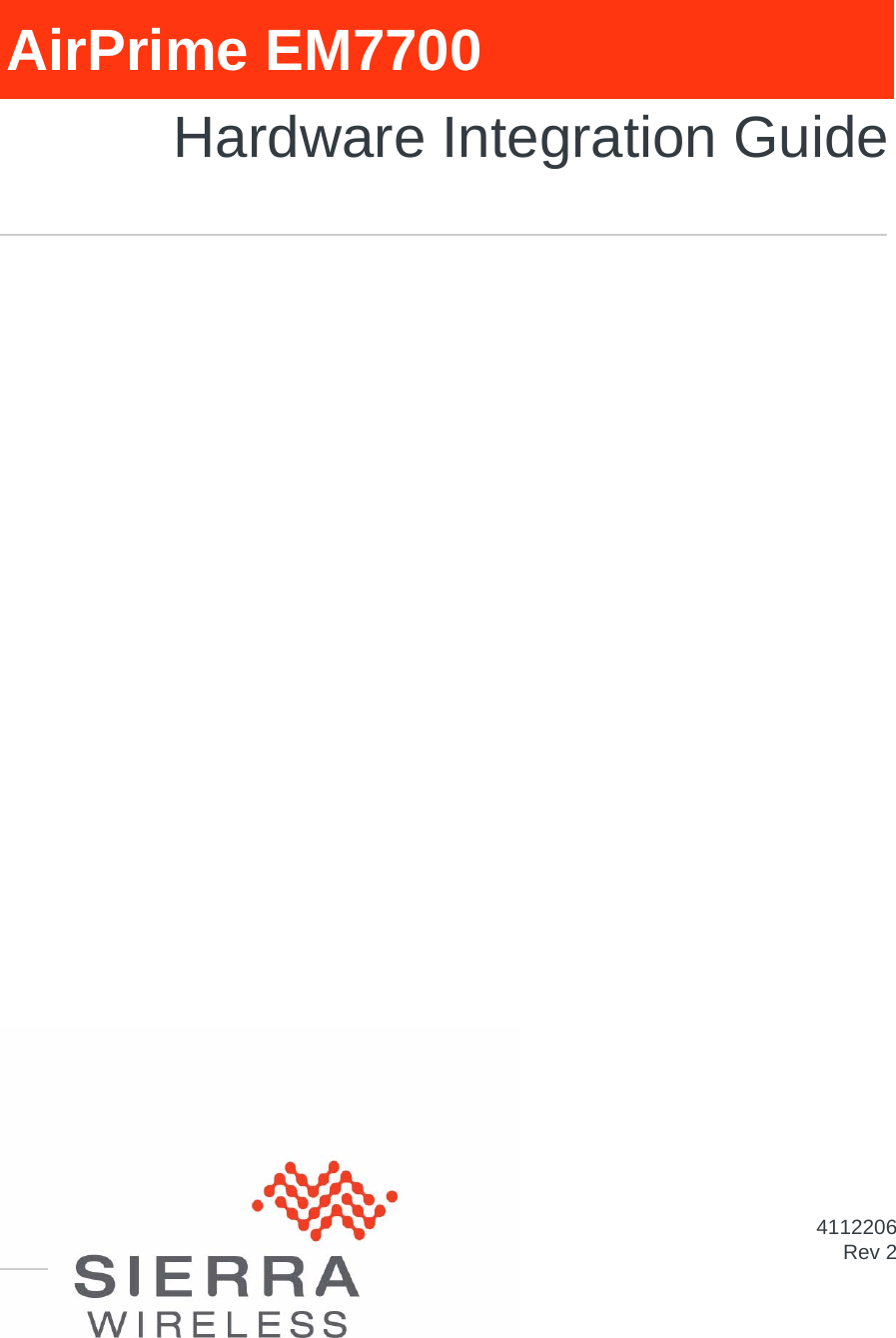
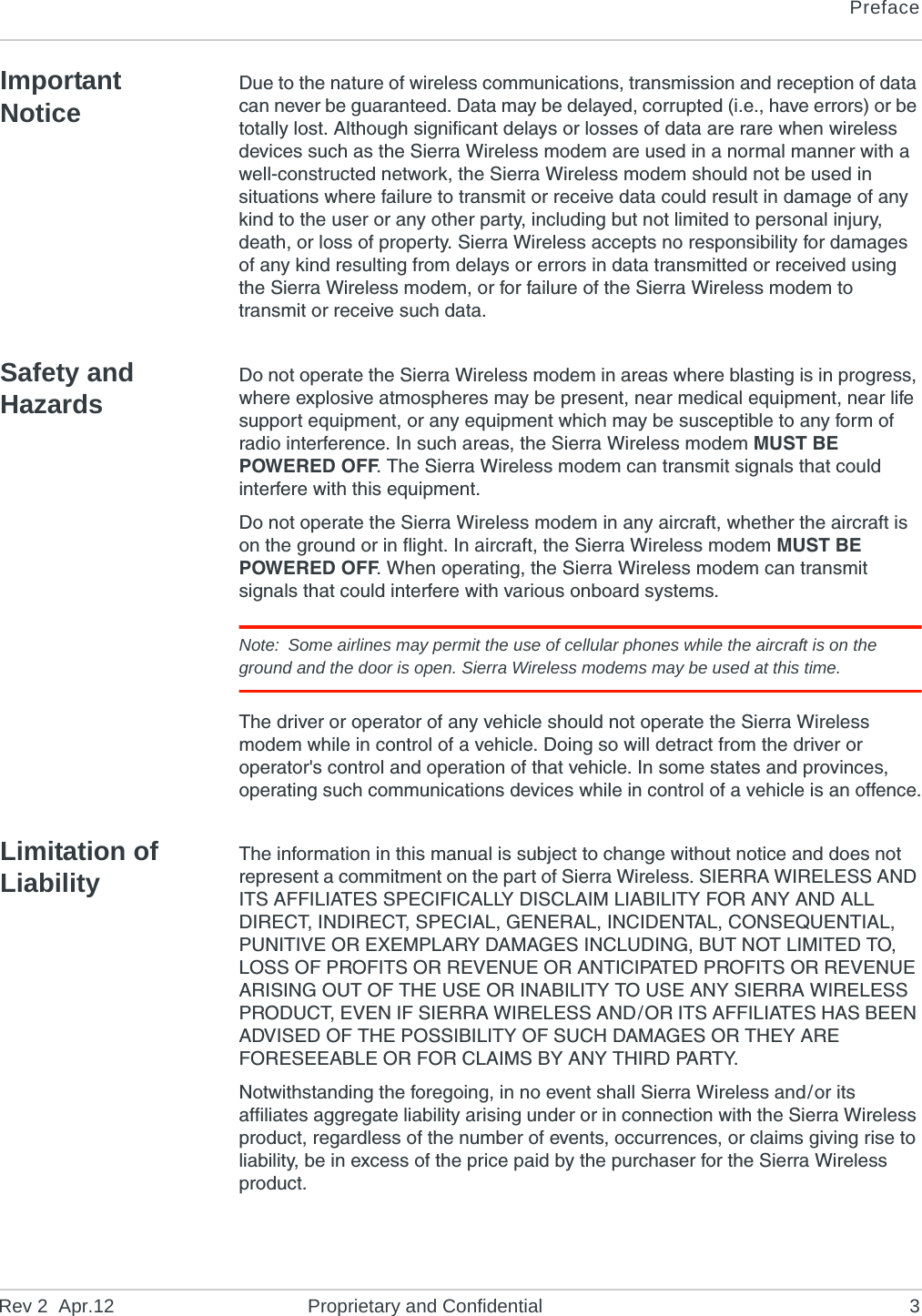
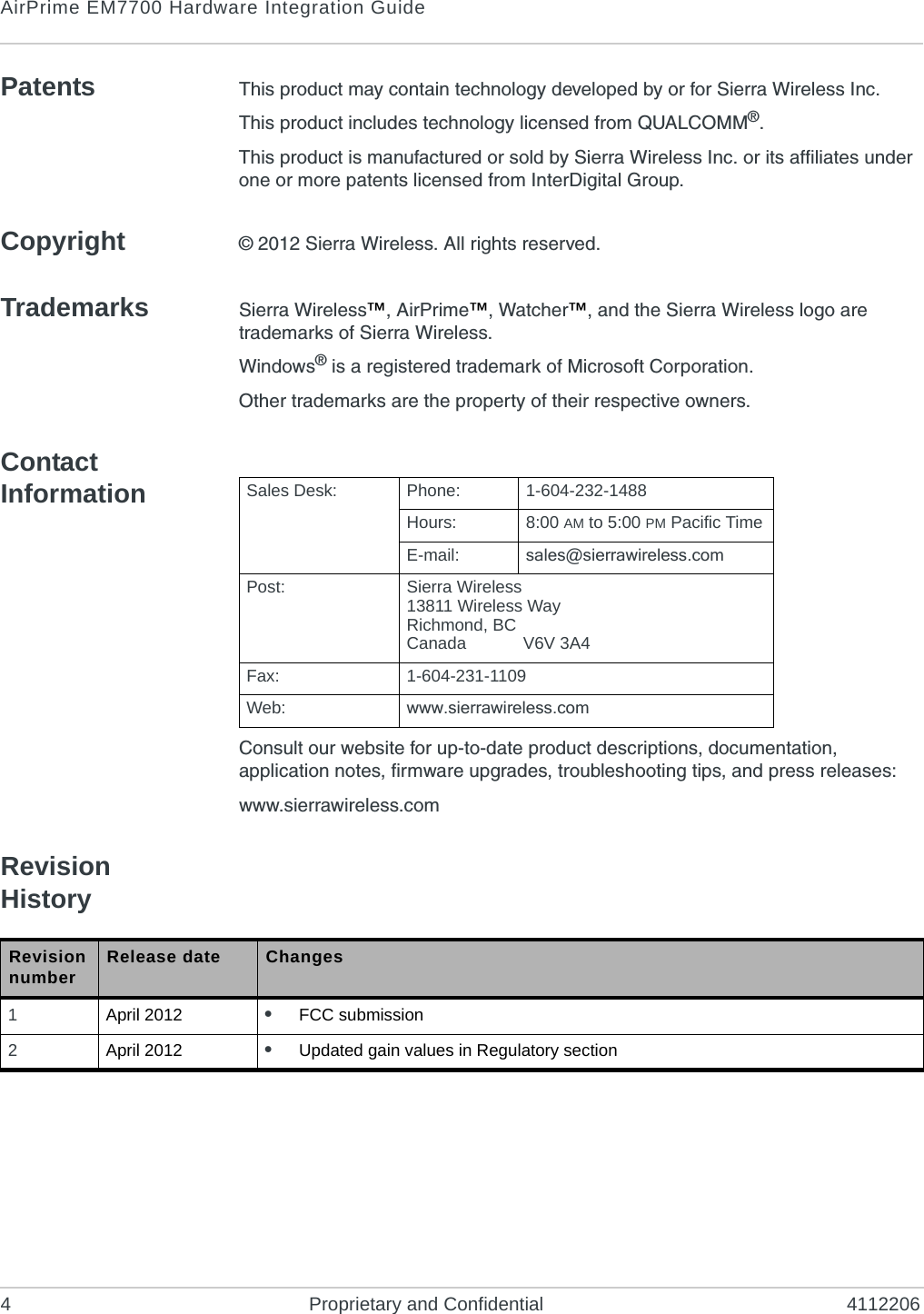
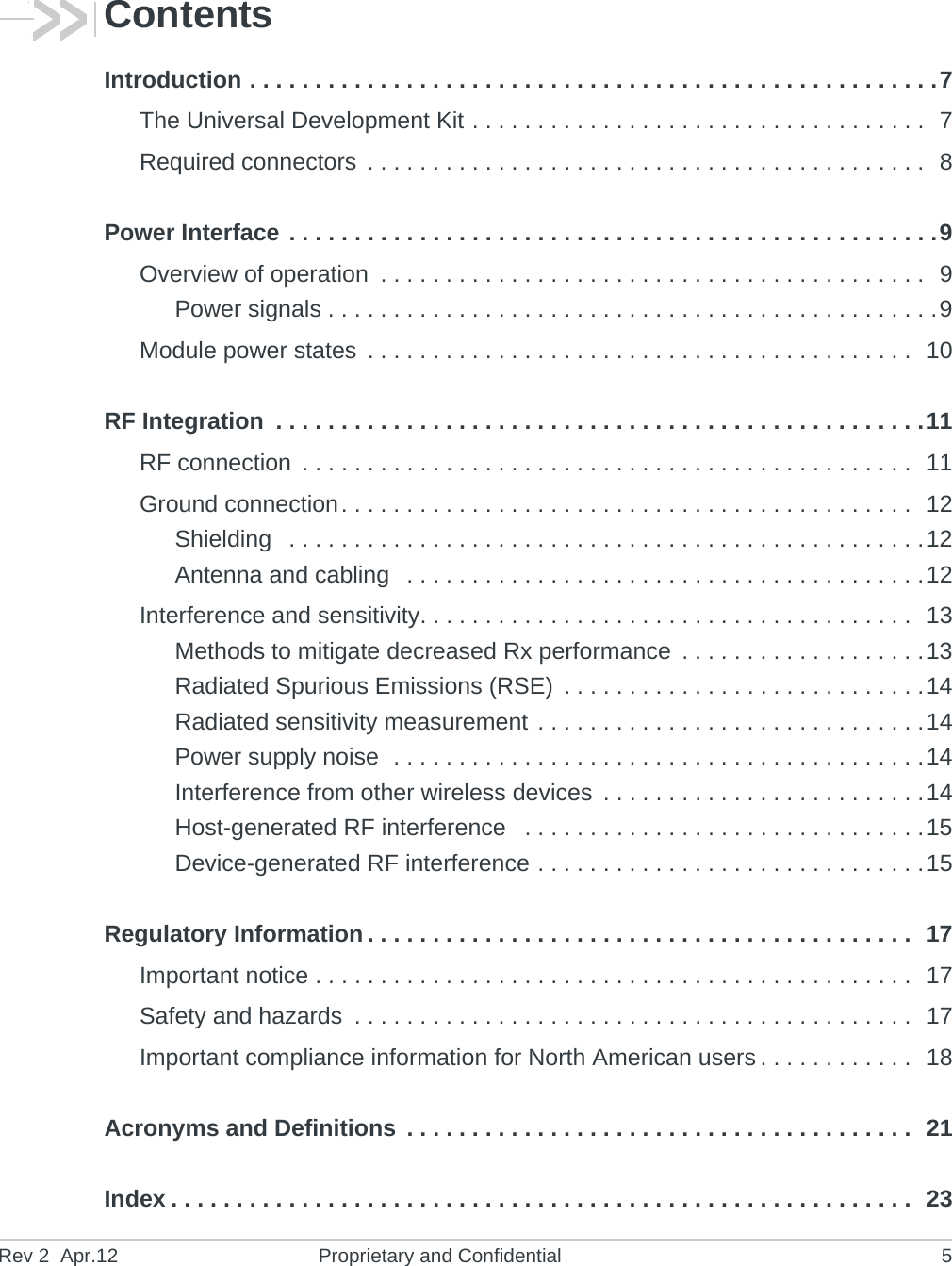
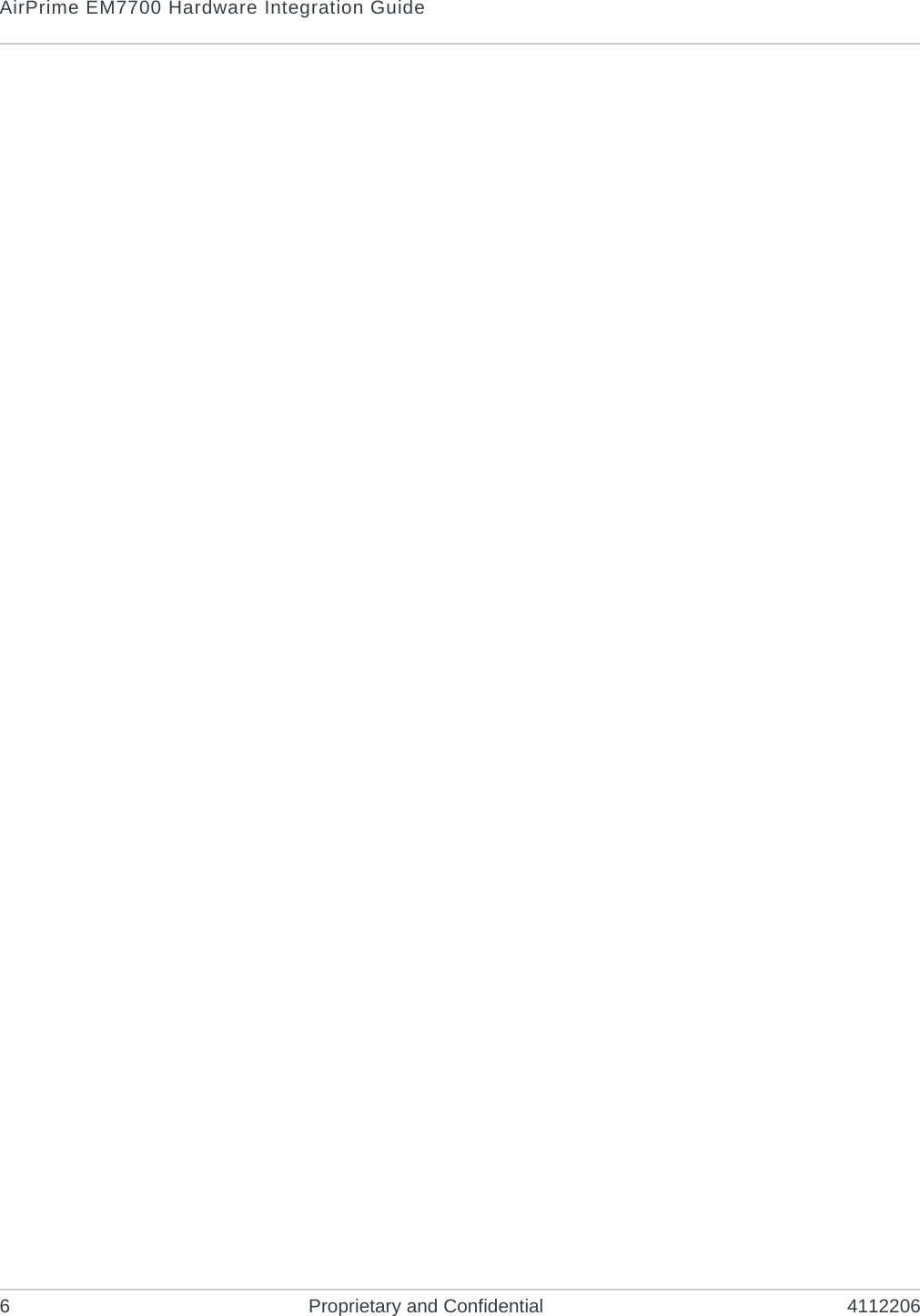
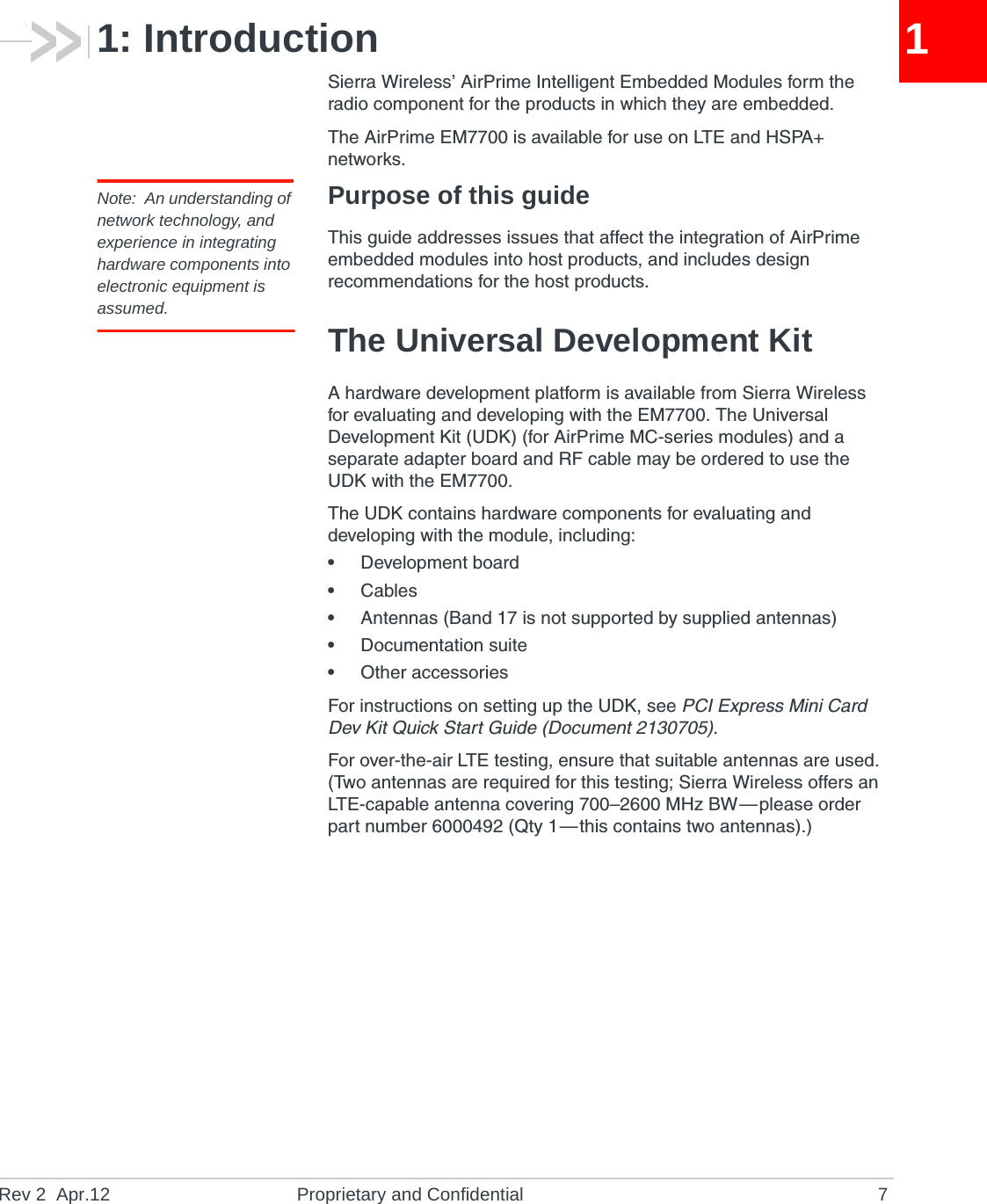
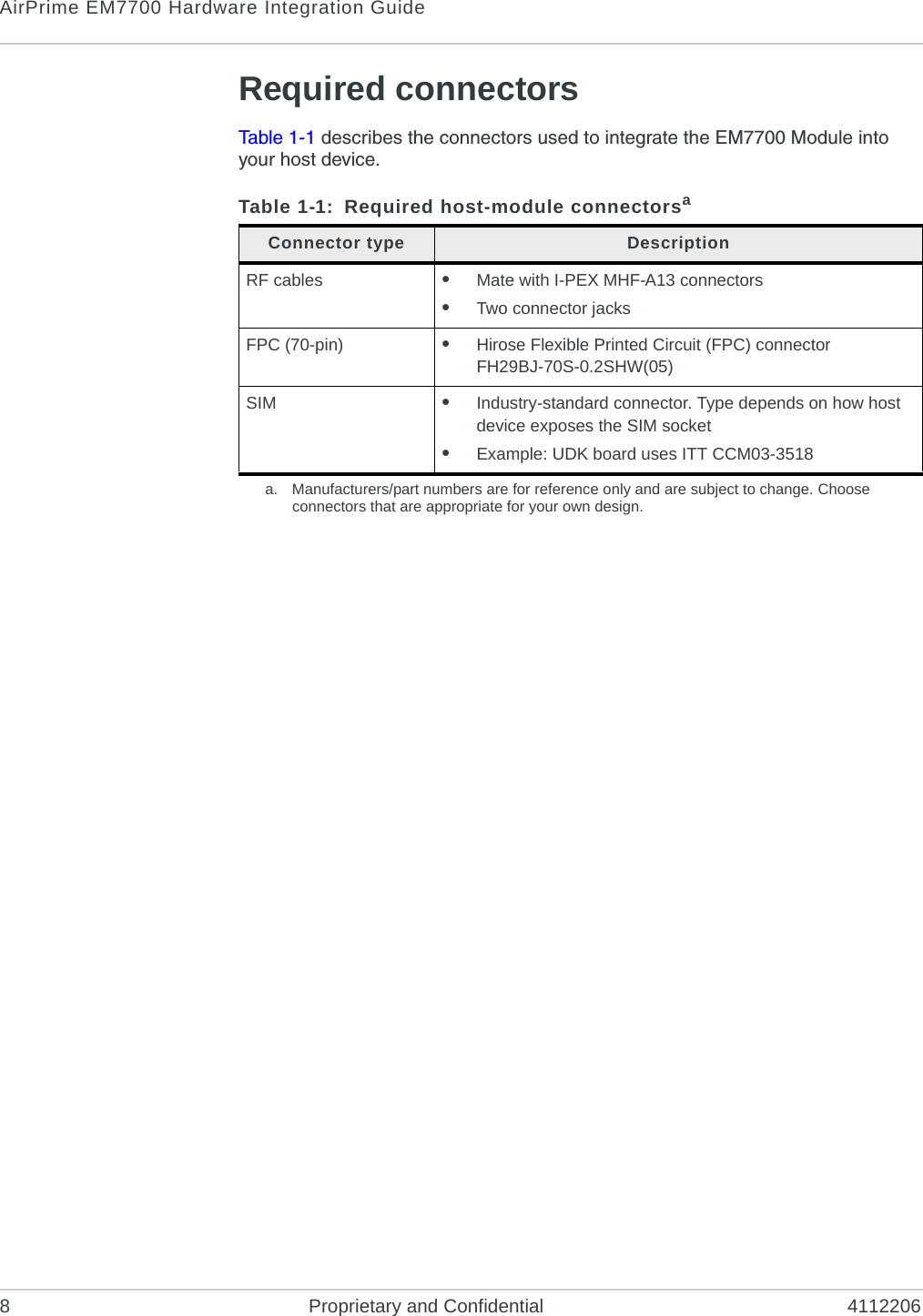
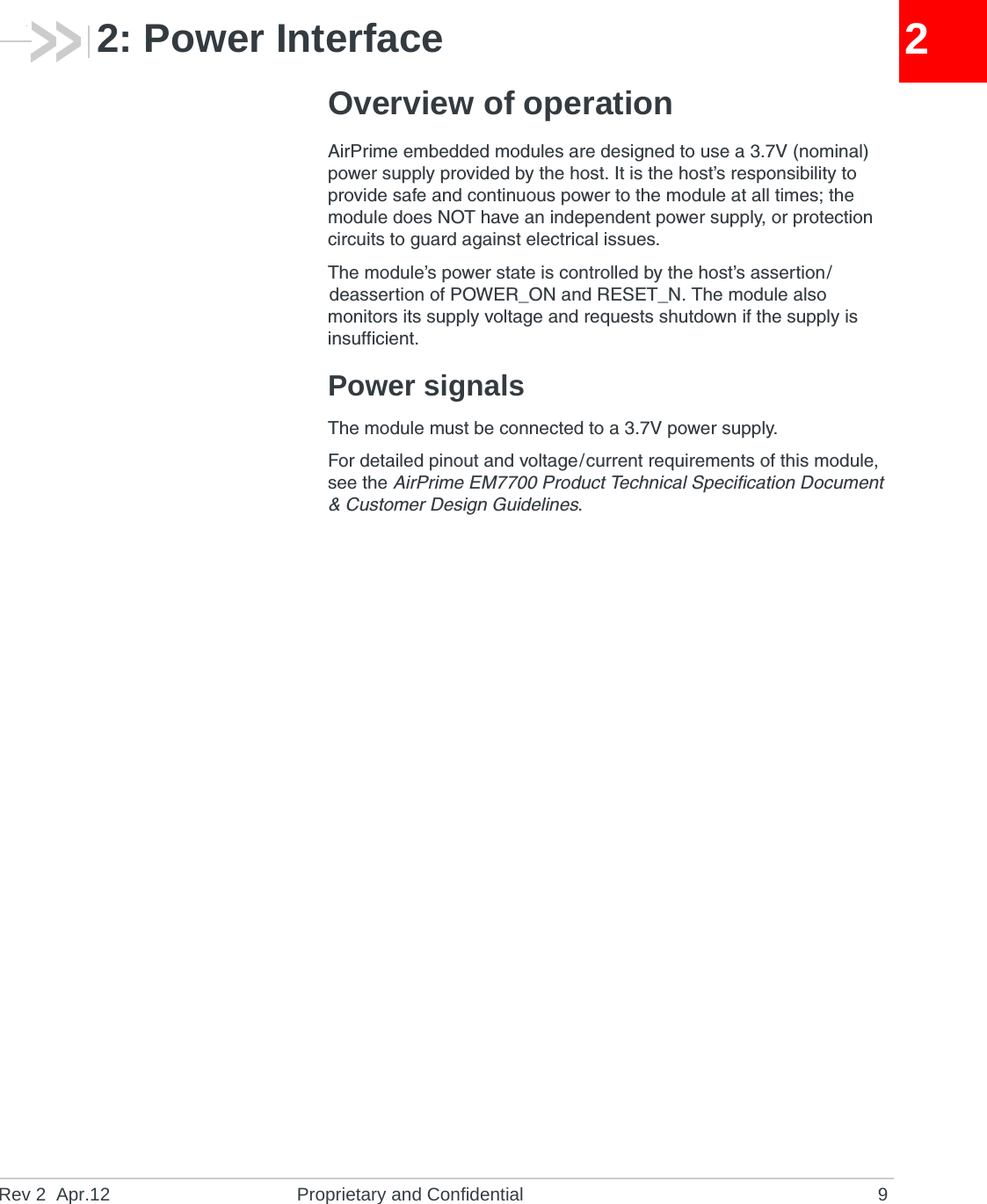
![AirPrime EM7700 Hardware Integration Guide10 Proprietary and Confidential 4112206Module power statesThe module has five power states, as described in Ta b l e 2 - 1 . Table 2-1: Module power statesState DetailsHost is poweredModule is poweredUSB interface activeRF enabledNormal(Default state)•Module is active•Default state. Occurs when VCC is first applied, POWER_ON is asserted (pulled high), and WWAN_DISABLE_N is deasserted•Module is capable of placing/receiving calls, or establishing data connections on the wireless network•Current consumption is affected by several factors, including:•Radio band being used•Transmit power•Receive gain settings•Data rate Low power(‘Airplane mode’)•Module is active•State is controlled by host interface using software commands:•+CFUN=0 ([1] AT Command Set for User Equipment (UE) (Release 6) (Doc# 3GPP TS 27.007))) Sleep •Normal state of module between calls or data connections•Module cycles between wake (polling the network) and sleep, at network provider-determined interval. Off •Host keeps module powered off by deasserting POWER_ON (signal left floating or tied low)•Module draws minimal current Disconnected •Host power source is disconnected from the module and all voltages associated with the module are at 0 V. ](https://usermanual.wiki/Sierra-Wireless/EM7700/User-Guide-1690982-Page-10.png)
